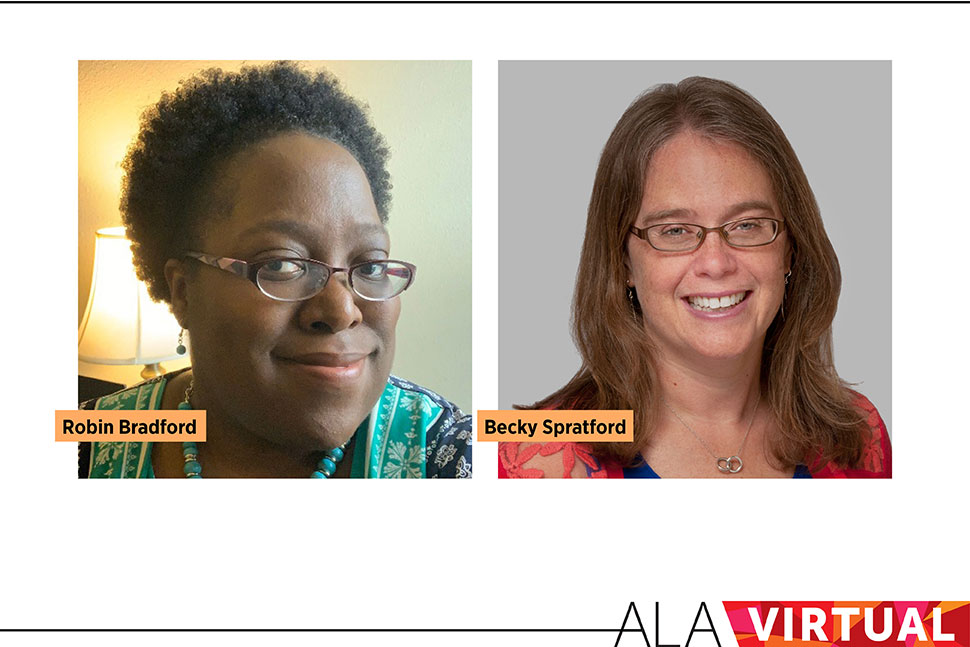
Library workers know there’s no shortage of diversity among the books and materials on the market—but presenters at “Suggesting Own Voices to All Readers: EDI and RA Service,” a June 25 session at ALA Virtual, addressed the barriers that separate diverse books from potential readers.
“Windows, mirrors, and doors are still important and will always be important, but it’s time to take the next step and recognize that books written by diverse authors, featuring diverse characters, are for anyone, for everyone, all the time,” said Robin Bradford, collection development librarian at Pierce County (Wash.) Library System, noting the growing availability of diverse materials through digital platforms.
Bradford offered strategies and resources for librarians approaching collection development through an equity, diversity, and inclusion (EDI) lens, urging librarians to read widely across genres and consult review journals.
“Your job is to go out and discover new authors, new genres, discover everything, so you can bring that back to your patrons,” she said. “Diverse books exist and have existed for years. You are the bridge that gets them into your patrons’ hands. Buy them, read them, recommend them, and your patrons will do the same.”
Co-presenter Becky Spratford, a library consultant whose business RA for All specializes in EDI and readers’ advisory, addressed the opportunity for librarians to recommend diverse books and materials from existing collections.
“The overall goal here is to be a role model for the rest of your staff and for your community,” she said. “[If] you spend more time reading books that everyone else isn’t reading or books by a wider variety of people, you’re going to have more to offer, and you’re going to inspire people to try those books.”
She echoed the same statistics that have resonated throughout ALA Virtual sessions about race representation in the profession, illuminating a largely female, white field.
“You need to understand that we are dealing with our patrons and our fellow staff members who have lived in a world that was completely covered in whiteness, and it felt uncomfortable for so long,” Spratford said. “Publishing is still overwhelmingly white. We need to work harder to make our collections represent the world at large and make people feel comfortable in our libraries.”


